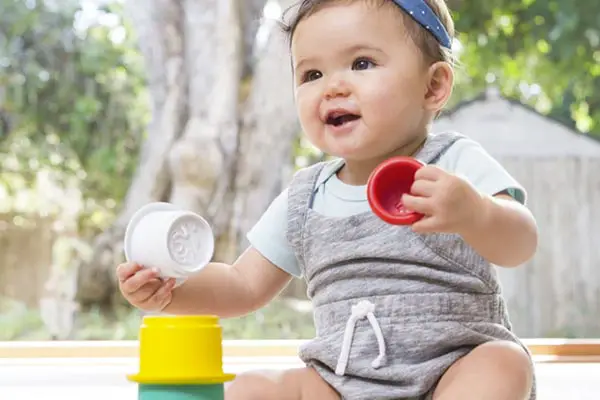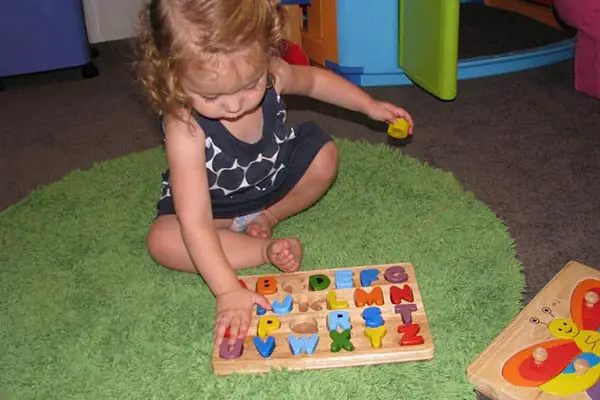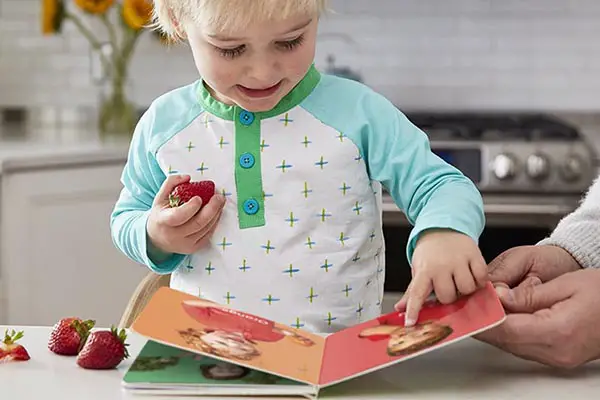When babies grow, you can easily recognize some emerging skills like talking and walking but anything in between is nuanced progress in their brain. Usually, the cognitive connections are the stepping stones to more milestones.
Three skills develop as the child’s brain grows – nesting, stacking and matching. Below is an average age range for all these activities.
In this Guide
When Can Babies Put Rings on Poles?
A child between the age of 13-15 months should be able to stack rings onto the peg instead of removing them. If your toddler is not stacking the rings, you can try playing the back and forth game together. Let the child give you the rings as you stack them one after the other. You can then switch roles and have the baby do the stacking and vice versa.
Try helping the child stack the rings by slightly tilting the peg towards their direction.
-
Nesting Little Cups into Bigger Ones
Between 12 to 19 months, the little one should be able to fit a small Drip Drop Cup into a bigger one. If the baby doesn’t nest spontaneously, you can let them know how by ensuring they watch as you small cup into the larger one and slowly move your hands.

If the little one tries to put the smaller cups into the larger ones spread the cups and try showing them again. If the toddler wants something more challenging, offer more baskets and cups to nest.
-
Putting the Circle Puzzle Pieces to The Puzzle
Between 12 to 15 months, the babies developing spatial skills usually helps them learn, putting one or even two circles of friends puzzle into the puzzle. Remove the three pieces at the centre and cover those holes if the baby looks frustrated by tapping a piece of paper over them.

-
Matching Identical Objects
Between 15 to 19 months, you’ll notice that your baby can match objects. Here’s how to work it out: Get two sets of identical items, they should be familiar like two rings in the same colour from the stacker and wooden coins. Make your toddler see and understand the similarity between the two. Give them a ring and ask them to pick a similar one.

Help your toddler grasp the matching concept by merely identifying similar objects in their surrounding like berries, spoons, towels, container lids, and pieces of cereal. Describe the things that make the items similar.
For instance, you can use two raspberries and state that they are both red, soft, and round. However, you need to be patient with the little ones as it may take several examples to get them to understand.